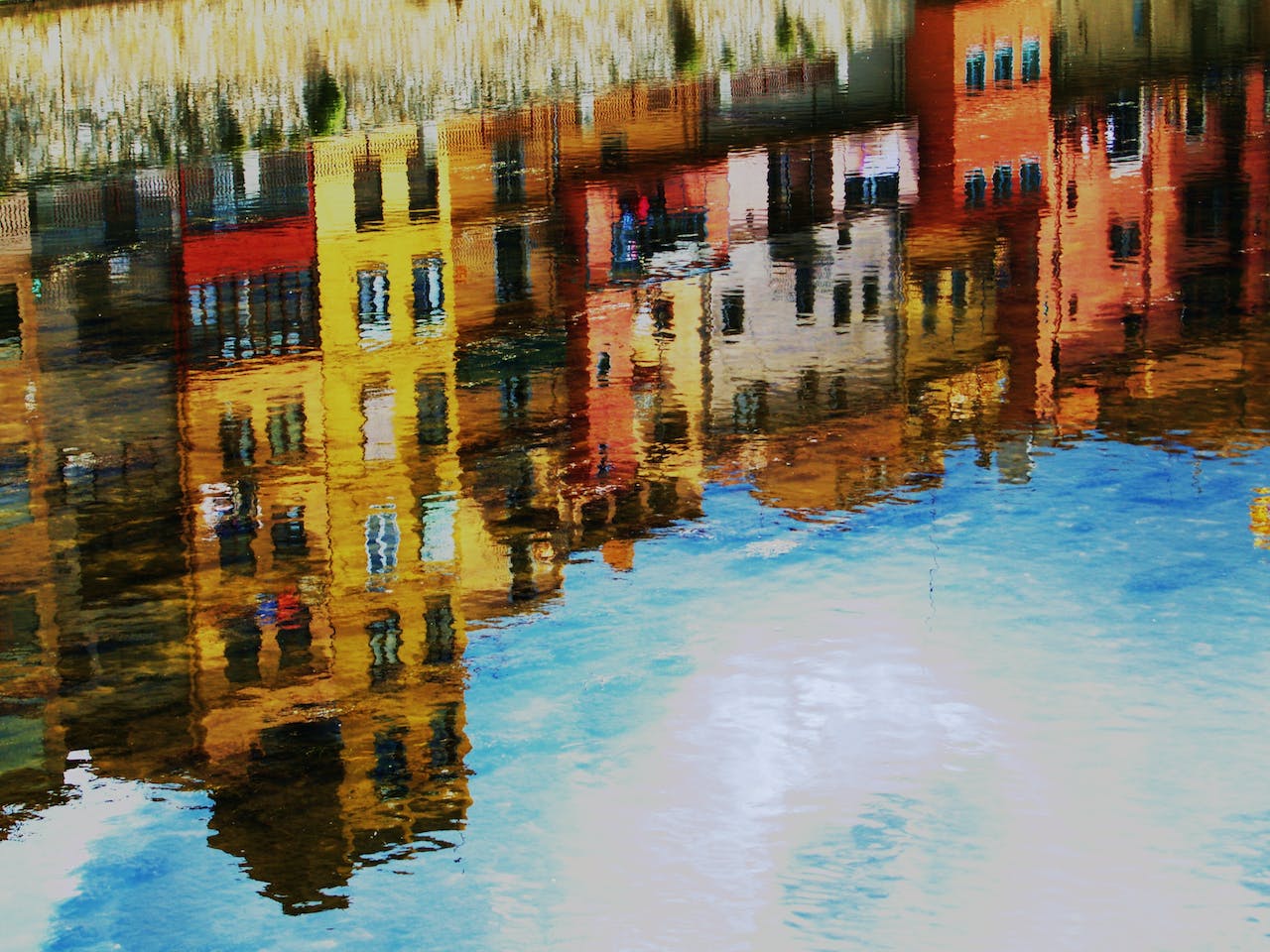
Imagine exploring a city’s soul not through its streets but through strokes on a canvas. This tool leverages a blend of social, ecological, local, and global lenses to foster thriving urban environments. You’ll see how cities can be reimagined as ecosystems that nurture both people and the planet.
As a family that loves to travel, you understand the importance of sustainable and holistic city planning. Stay tuned as we unpack the power of city exploration on canvas, promising a journey that’s as enriching as it is enlightening.
The Art of City Exploration on Canvas
Capturing the Essence of a City
Cities are more than just a collection of buildings and streets; they’re living entities with their own personalities and stories. When you’re aiming to capture the essence of a city on canvas, it’s about more than just the visual representation; it’s about conveying the city’s soul. This process involves:
- Absorbing the atmosphere, the buzz of the streets, the quiet corners, and the daily interactions.
- Noticing the architecture, public spaces, and iconic structures that define the city.
- Sensing the pulse of the city, including its rhythms, movements, and energy.
Dive into local culture and customs—from street vendors to festivals, every detail adds to a city’s unique tapestry. Remember, colors, textures, and even sensory elements like the scent of fresh bread or the sound of street musicians can translate into evocative visuals on your canvas.
Choosing the Perfect Location
The perfect location is critical to authentically document your city exploration on canvas. Here are a few tips to consider when picking your spot:
- High vantage points offer panoramic views and a sense of the city’s scale.
- Historic neighborhoods provide a glimpse into the city’s heritage and evolution over time.
- Waterfronts capture the interplay between nature and urban life.
Don’t hesitate to venture off the beaten path. Alleys and side streets can reveal hidden gems that typical tourist spots might lack. Look for locations where the essence of the city is in full display—places where you can feel the city breathing, where its heart beats the strongest. Keep an eye out for those unique characteristics that you can’t find anywhere else—those are the scenes that will make your city exploration on canvas truly stand out.
Preparing for Urban Art
When you’re getting ready to capture a city’s essence through your artwork, the right preparation is key. Whether you’re a seasoned artist or a family that thrives on travel and creativity, these steps will ensure that your city exploration on canvas is as rich and detailed as your experiences.
Gathering Art Supplies
You might wonder what exactly you’ll need to bring your urban landscape to life. Start by curating a kit that’s both portable and comprehensive. It should fit your travel style and allow for spontaneity—you never know when inspiration will strike as you’re exploring with your loved ones.
- Sketchbooks or canvases: Travel-sized options are great for on-the-go art.
- Drawing materials: Think pencils, charcoal, or markers for those quick outlines.
- Paints: A small set of watercolors or acrylics can work wonders.
- Brushes: A few varied sizes will cover most of your needs.
- Easel: A collapsible easel is perfect for setting up anywhere.
- Extras: Don’t forget a water bottle, rags for cleanup, and of course, sunscreen.
Researching the City’s History
Diving into the city’s past can significantly enrich your art. Before you head out with your family, take some time to learn about the location’s heritage. You’ll gain a deeper appreciation for the urban landscape, which can translate into more insightful and meaningful artwork.
1. Visit local museums or archives
These institutions are not just repositories of artifacts; they serve as gateways to the past, offering a rich tapestry of information that unveils the layers of a city’s heritage. Dive into the exhibits, manuscripts, and relics, allowing each piece to tell a story that contributes to a deeper understanding of the community’s roots and evolution.
2. Read books or watch documentaries
This pre-travel activity not only enhances your anticipation but also equips you with valuable insights, making your on-site explorations more meaningful. Whether it’s absorbing the pages of a travelog, uncovering historical novels, or immersing yourself in thought-provoking documentaries, this intellectual exploration becomes a precursor to the adventures that lie ahead.
3. Talk to residents
Beyond the information found in guidebooks, the stories shared by locals provide a unique and authentic perspective on the heartbeat of the city. Listen to their anecdotes, traditions, and personal experiences, gaining access to a wealth of knowledge that adds depth and nuance to your understanding of the destination.
4. Explore local landmarks
Aside from their architectural significance, landmarks often encapsulate the spirit, history, and cultural significance of a place. Roam through historic sites, architectural marvels, and iconic structures, allowing each visit to unravel a layer of the city’s narrative. Whether it’s a towering monument, a centuries-old cathedral, or a vibrant market square, these landmarks become living witnesses to the city’s evolution.
5. Check out local shops
Far more than mere retail spaces, these shops act as gateways to the discovery of genuine souvenirs and custom-made gifts that artfully encapsulate the very essence of the community’s lifestyle. From intricately crafted trinkets to uniquely tailored creations, each item narrates a story embedded with cultural significance. Stroll at your own pace through these local boutiques, allowing the diverse offerings to intricately weave a narrative that adds layers of richness to your travel adventure.
Approaching your art with a background in the city’s history will allow you to see beyond the buildings and streets, capturing the spirit and transformation of the urban environment over time. With each brushstroke or pencil mark, you’re not just depicting a scene; you’re telling a piece of the city’s ongoing story.
Remember, it’s the stories bound in the pavements, the echoes in the architecture, and the whispers in the wind that give a place its magic. So, as you prepare for your urban art journey, savor the anticipation of uncovering these tales and sharing them through your unique family lens.
Techniques for Depicting Cities
Sketching Urban Landscapes
When you start sketching cityscapes, it’s crucial to capture the flow of urban life. Begin with a light pencil outline to set the composition of your city scene. Look for dynamic angles and contrasting elements like the harsh lines of skyscrapers against a soft sunset. Remember these key points:
- Embrace imperfections as they add character to sketches
- Include moving elements such as people and vehicles to convey city life
- Utilize shading to create depth and a sense of realism
Think of each sketch as a moment frozen in time, a snapshot of the city’s ongoing story that you’re telling through your unique lens.
Experimenting with Mixed Media
Don’t shy away from mixing your mediums. This technique allows you to add texture and depth to your city portrayals. For instance, you might combine:
- Watercolor for a soft background
- Ink for precise architectural details
- Pastels for vibrant highlights and energy
Play around with different combinations to see how they change the mood of your cityscapes. Mixed media brings a layer of complexity to your work, reflecting the multifaceted nature of the urban environment you’re capturing.
Exploring Different Perspectives
Capturing Famous Landmarks
When immortalizing a city on canvas, famous landmarks often take center stage. You’ve seen them in photos, postcards, and movies, but when you sketch, paint, or photograph these iconic structures, aim to capture their essence from a fresh angle. Here’s what you can do:
- Visit during different times of the day to observe how the light alters the scene.
- Find a unique vantage point that isn’t commonly photographed.
- Consider the landmark’s reflection in a puddle or window for an unusual perspective.
Incorporating local flora, people, or street vendors in the foreground can bring these landmarks to life. They’re not just architectural marvels; they’re places alive with stories.
Discovering Hidden Gems
Beyond the grandeur of celebrated sights, there’s a different narrative waiting in the city’s nooks and crannies. Engage with the hidden gems; the small alleyways, the quirky art installations, and the textured walls whispered over by ivy.
To uncover these jewels:
- Wander off the beaten path.
- Engage with locals to learn about spots that are cherished but not widely known.
- Look for the interplay between shadow and light in narrow lanes — they often offer dramatic contrasts perfect for artistic interpretation.
Remember, the aim is to create a city portrait that tells the stories untold by conventional travel guides. Let your canvas reveal the city’s soul, from its monumental landmarks to the understated beauty waiting to be found by the curious and creative eye.
Tips for Creating Dynamic City Scenes
Playing with Light and Shadows
When you’re out capturing the essence of the city, pay attention to how light falls on buildings, streets, and people. Early morning or late afternoon are golden hours for artists, where light casts dramatic shadows and gives everything a warm, inviting glow. But don’t shy away from the stark contrasts of midday or the subtle hues of twilight.
Playing with light and shadows in your artwork can bring a two-dimensional canvas to life. To do this, consider:
- Sketching scenes at different times of the day to observe how the light changes
- Using dramatic shadows to create a focal point
- Emphasizing the play of sunlight on windows, water, or the city’s flora
Remember, shadows add depth and mystery to your scenes, making them feel more alive.
Adding Movement to the Composition
Cities are never still, and your canvas should reflect the buzzing life that defines them. Think about how you can represent the motion of city life in your art. You could:
- Blur the edges of moving subjects, like cars or people, to imply motion
- Paint streaks of light from traffic to give the sense of bustling streets
- Capture the sway of trees or flags in the wind to add energy to your scene
Don’t forget, small details such as fluttering pigeons, pedestrians in stride, or a bicyclist zipping by can all contribute to the dynamism of your urban landscape. It’s these hints of movement that can turn a static image into a story of life in motion.
Final Thoughts
You’ve unlocked the secrets to immortalizing the vibrancy of urban landscapes on your canvas. By embracing the dynamic interplay of light, shadow, and movement, you’re now equipped to tell the compelling stories that lie within the city’s heartbeat. Remember, it’s the unexpected snapshots, the hidden nooks, and the shifting hues of daylight that will infuse your artwork with authenticity. So grab your brushes and let the city’s ever-changing narrative inspire your next masterpiece. Your canvas awaits, ready to capture the city’s soul as only you can.

